Net-Zero Homes in Whitefish, Montana — Sustainable Living in 2025
Whitefish, Montana, a mountain town known for its breathtaking landscapes and close-knit community, is quickly becoming a regional leader in sustainable living. Since adopting a forward-thinking Climate Action Plan in 2018, the city has witnessed a steady rise in net-zero homes: high-performance residences designed to generate as much renewable energy as they consume over the course of a year.
These homes aren’t a futuristic ideal, they’re a growing reality. By harnessing solar power, geothermal energy, and smart design, homeowners in Whitefish are actively reducing their environmental footprint while gaining energy independence and long-term savings.
Why Are Net-Zero Homes Gaining Traction in Whitefish?
- Environmental Impact: Net-Zero Homes in Whitefish drastically reduce greenhouse gas emissions, directly contributing to the fight against climate change.
- Economic Benefits: Lower utility bills and increased property value make these homes a smart long-term investment.
- Energy Independence: Generating energy on-site reduces reliance on the grid and increases resilience.
So, is a sustainable lifestyle in a stunning mountain town calling your name?
Table of Contents
- The Principles of Net-Zero Homes
- A Real-Life Net‑Zero Example
- Technologies Used in Net-Zero Homes
- The Process of Building a Net-Zero Home
- The Allure and Nuances of Net-Zero Living in Whitefish
- Whitefish Goes Green
- Financial and Regulatory Landscape for Net-Zero Homes
- Pioneering Net-Zero Homes in Whitefish, Montana
- Whitefish: A Net-Zero Trailblazer
- FAQs
- Conclusion
Read on to explore how net-zero homes are transforming the way people live in Whitefish, Montana.
The Principles of Net-Zero Homes
Net-zero homes aren’t magic; they achieve energy independence through a combination of smart design and cutting-edge technology.
3 core principles form the foundation:
1. Energy Efficiency:
Minimizing energy consumption is paramount.
Net-Zero Homes in Whitefish prioritize superior insulation, across walls, roofs, and foundations, to reduce heat loss in winter and heat gain in summer. High-performance windows with low U-factors and strategically placed overhangs further enhance overall energy efficiency.
According to this study, proper insulation and air sealing can reduce a home’s heating and cooling needs by up to 30%.
Tight building envelopes and energy-efficient appliances ensure minimal energy waste.
2. Renewable Energy Generation:
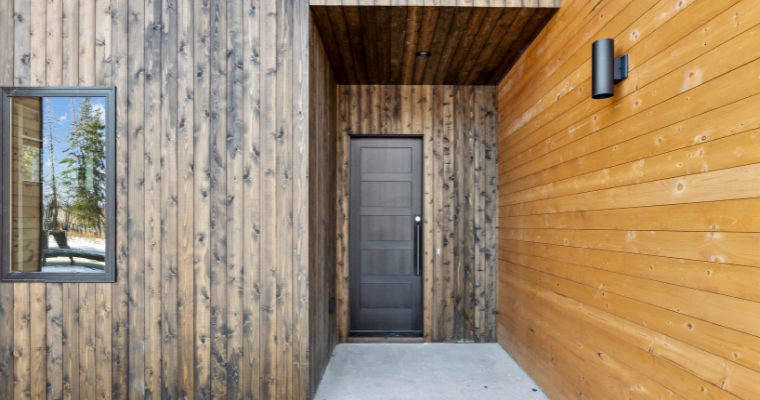
Net-zero homes aim to produce as much renewable energy as they consume.
Solar panels are the most common choice, capturing the sun’s energy and converting it into electricity. Geothermal heating and cooling systems leverage the constant temperature below the earth’s surface for efficient climate control.
Wind turbines in suitable locations can also contribute to renewable energy generation.
3. Energy Storage:
Inevitably, there will be times when energy production doesn’t meet demand.
This is where energy storage systems come in. Battery banks can store excess solar energy generated during the day for use at night or during peak demand periods.
Smart home technology helps optimize energy use and integrates seamlessly with renewable energy sources and storage solutions.
By following these principles, net-zero homes achieve energy independence, reduce reliance on the traditional grid, and contribute to a more sustainable future.
A Real-Life Net‑Zero Example: Lee Calhoun’s Salmon Run Home
A powerful local example of net-zero living comes from Lee Calhoun, who built his energy-efficient home on Salmon Run Road in Whitefish. As one of the early adopters of Net-Zero Homes in Whitefish, Calhoun integrated solar panels, a high-performance insulation system, and a heat pump, allowing his home to produce surplus energy by early March, months ahead of expectations. Using a real-time monitoring dashboard, he tracks both energy consumption and production, sending excess electricity back to the grid and earning credits to offset usage during lower production periods. His approach showcases how smart design and planning can turn sustainable vision into measurable results. (Whitefish Pilot)
For those considering a similar journey, understanding the cost to build a house in Whitefish can be a key first step in planning an efficient, future-ready home.
Practical Design Strategies for Net‑Zero Homes
Achieving net-zero performance starts with thoughtful, efficient design. Here are three core strategies that guide successful net-zero construction:
- Design compact, solar-ready homes:
Smaller homes with efficient layouts naturally require less energy. Proper orientation, typically with south-facing windows, maximizes solar gain, while overhangs and shading elements help manage seasonal heat. - Use high-performance materials:
Super-insulated walls, tight building envelopes, and energy-efficient windows reduce heat loss and enhance year-round comfort. These elements form the foundation of any energy-efficient structure. - Integrate renewable systems from the start:
Solar PV, heat pumps, and geothermal systems should be considered during the planning stage, not as afterthoughts. Designing a home with solar-ready infrastructure ensures smoother integration and long-term cost savings.
For a deeper dive into sustainable home planning, explore our full guide on building a home in Montana
FEATURED LISTING
EXCLUSIVE WHITEFISH LISTING – 824 E 10TH STREET
Discover the exceptional features and prime location of this stunning home. With unique design and a rare investment opportunity, this is your chance to make it yours. Get full details today.
Technologies Used in Net-Zero Homes
The magic behind net-zero homes lies in their innovative use of technology to achieve energy independence.
Solar panels are the workhorses of most net-zero homes, capturing the sun’s rays and converting them into clean electricity.
A study by the National Renewable Energy Laboratory (NREL) found that solar panels can generate up to 80% of a home’s electricity needs in optimal locations, making them a powerful tool for reducing reliance on the traditional grid.
Beyond solar, other technologies play crucial roles:
- Geothermal systems: Tapping into the earth’s constant temperature, geothermal systems offer efficient heating and cooling solutions.
- Energy-efficient appliances: From refrigerators to washing machines, high-efficiency models significantly reduce energy consumption.
Smart home technology acts as the brain of a net-zero home.
By integrating with renewable energy sources, storage systems, and energy-efficient appliances, it optimizes energy use and production.
Imagine a system that automatically adjusts lighting and temperature based on occupancy or weather conditions – that’s the power of smart home technology in action.
These technologies working in concert pave the way for a future where homes are not just energy-efficient, but self-sufficient.
The Process of Building a Net-Zero Home
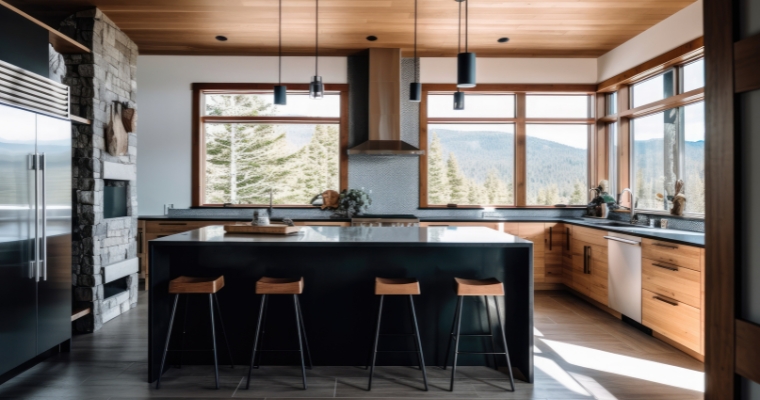
Creating Net-Zero Homes in Whitefish isn’t as simple as slapping on solar panels; it’s a meticulous process that begins with careful planning and extends through construction. The first step involves selecting a site that maximizes solar potential.
A study by the National Association of Home Builders (NAHB) found that proper site orientation for solar access can increase a home’s solar energy generation by up to 20%, making location a key factor in achieving net-zero status.
Following site selection, the focus shifts to design and material choices.
Net-zero homes prioritize superior insulation, high-performance windows, and tight building envelopes to minimize energy loss.
Energy-efficient appliances and HVAC systems are also essential components. Construction utilizes sustainable materials whenever possible, further reducing the home’s environmental footprint.
Net-Zero Design Principles & Technical Insights
Building a true net-zero home means more than just adding solar panels—it’s about applying proven design principles that reduce energy needs and environmental impact from the ground up. Here are three technical cornerstones:
- Prioritize passive design and renewable energy:
Site placement, window orientation, and strategic insulation should work together to minimize the need for mechanical heating and cooling. Renewable systems—like solar and geothermal—should be foundational, not optional. - Minimize embodied carbon in materials:
Choosing recycled, locally sourced, or carbon-storing materials like sustainably harvested wood can significantly reduce a home’s construction-related emissions. These decisions support long-term sustainability without sacrificing quality. - Seal the envelope and optimize ventilation:
Airtight construction paired with mechanical ventilation systems (like HRVs or ERVs) maintains indoor air quality while preventing energy loss. This ensures consistent comfort, healthy living, and lower energy bills.
Curious how these principles translate into high-end results? Learn more about our luxury home building process in Whitefish and how we integrate sustainability without compromising design.
The Allure and Nuances of Net-Zero Living in Whitefish
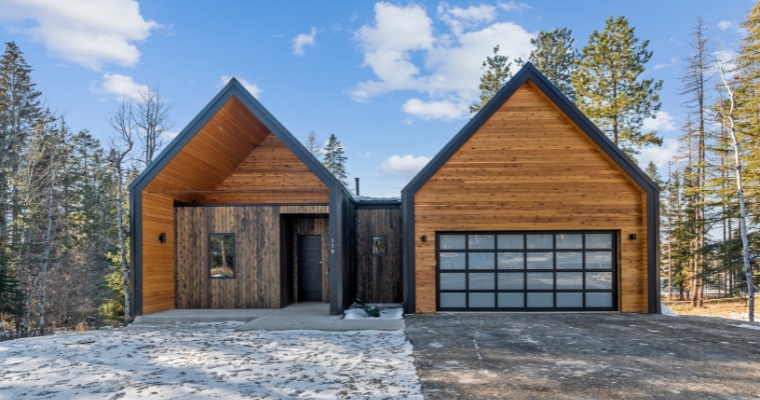
Net-zero homes offer a compelling proposition for Whitefish residents seeking a sustainable lifestyle.
The environmental benefits are undeniable
By relying on renewable energy sources like solar panels, these homes significantly reduce greenhouse gas emissions, a key factor in combating climate change. A 2022 study by the National Renewable Energy Laboratory (NREL) found that a typical net-zero home can offset an average of 6-10 tons of carbon dioxide emissions per year, equivalent to taking several gasoline-powered vehicles off the road.
This translates to cleaner air and a healthier planet for Whitefish and beyond.
Economically, net-zero homes offer long-term advantages
While the upfront costs might be higher than traditional builds, significant savings on energy bills over the years can compensate for the initial investment. Additionally, studies by the U.S. Department of Energy suggest that net-zero homes can experience increased property values due to their energy efficiency and environmental appeal.
Health and comfort benefits
Beyond environmental and economic benefits, Net-Zero Homes in Whitefish enhance overall living experiences. Superior insulation and tight building envelopes lead to improved indoor air quality, reducing exposure to dust, allergens, and pollutants. Smart home technology integration can further optimize temperature control and lighting, creating a more comfortable and healthy living environment.
Challenges exist, of course
Building a net-zero home in Whitefish also comes with challenges.
- Net-zero homes can have higher upfront costs compared to traditional builds. However, potential tax incentives and long-term energy savings can mitigate this concern.
- Navigating local permitting processes with Whitefish authorities requires careful planning, though the city’s commitment to sustainability might streamline this process compared to other areas.
- Finally, Whitefish’s climate, with cold winters and warm summers, necessitates careful home design and the selection of appropriate renewable energy sources to achieve net-zero status.
Despite these challenges, the allure of a sustainable and comfortable living environment in Whitefish is undeniable.
Net-zero homes offer a path towards a cleaner future, energy independence, and a healthier home for residents and the surrounding environment.
Whitefish Goes Green: The Net-Zero Boom
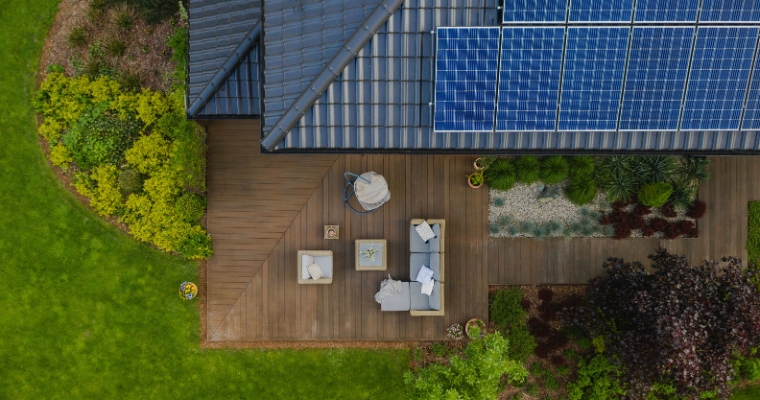
The exact origin of Whitefish’s net-zero trend is unclear, but the rise is undeniable. Nationally, climate change concerns are driving a push for sustainable living, and Whitefish residents are embracing it. Environmental awareness is growing, making net-zero homes, offering a path to a smaller carbon footprint, a natural fit.
Whitefish’s abundant sunshine, averaging 5.2 sun-hours daily (Montana DEQ report), makes it ideal for solar power – a key element in net-zero construction. Local builders are incorporating solar into designs, meeting the demand for sustainable living.
Finally, government incentives at the state and federal level make net-zero homes more attractive.
Tax credits for energy-efficient construction and renewables can offset upfront costs. Whitefish’s 2018 Climate Action Plan signifies a commitment to sustainability, potentially leading to streamlined permitting or local incentives in the future.
With environmental awareness, a favorable climate, and financial support, Whitefish is well-positioned as a Montana net-zero leader.
FEATURED LISTING
EXCLUSIVE WHITEFISH LISTING – 824 E 10TH STREET
Discover the exceptional features and prime location of this stunning home. With unique design and a rare investment opportunity, this is your chance to make it yours. Get full details today.
Financial and Regulatory Landscape for Net-Zero Homes
Building Net-Zero Homes in Whitefish can be financially rewarding. Tax credits, grants, and rebates aim to support both homeowners and builders. These fiscal perks are designed to lower the barriers to energy-efficient construction and the adoption of renewable energy solutions, making the leap toward net-zero living not just environmentally sound but economically wise as well.
Local regulations and policies in Whitefish play a crucial role in shaping the net-zero home construction landscape. The city’s forward-thinking stance on sustainability is reflected in its regulatory framework, which is geared toward simplifying the permitting process for such eco-friendly projects.
With Whitefish’s Climate Action Plan hinting at future incentives and potentially relaxed regulations, the city is actively fostering an environment where net-zero home construction is not only encouraged but facilitated—making it an appealing prospect for those looking to build or transform their homes into bastions of sustainability.
Pioneering Net-Zero Homes in Whitefish, Montana: Lessons from 158 Mountain Brook Lane
The quest for sustainable living finds a powerful expression in net-zero homes. Whitefish, Montana, is home to one remarkable example – 158 Mountain Brook Lane – that offers valuable insights into achieving net-zero status.
158 Mountain Brook Lane
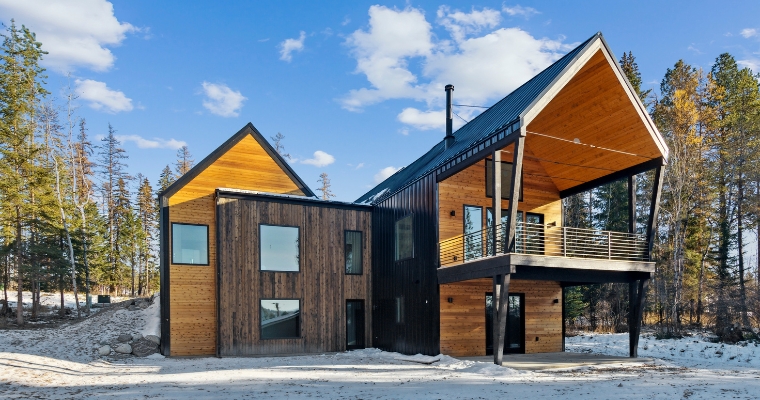
158 Mountain Brook Lane demonstrates how cutting-edge technology and sustainable practices create luxurious, eco-friendly dwellings. Passive solar heating, advanced insulation, and energy-efficient appliances prioritize energy efficiency. This project emphasizes the importance of collaboration between architects, engineers, and builders, particularly when navigating site constraints and material sourcing. Solar energy generation and low-water landscaping minimize the environmental impact. The project underscores the need for flexibility and adaptability in sustainable construction to achieve net-zero goals.
Turn Your Whitefish Net-Zero Dream into Reality.
These projects showcase the importance of early planning and collaboration.
While challenges exist, creativity and perseverance can overcome them.
Homeowners and builders advise future net-zero builders to remain committed to sustainability goals and view upfront costs as investments in future savings and environmental preservation.
Whitefish: A Net-Zero Trailblazer
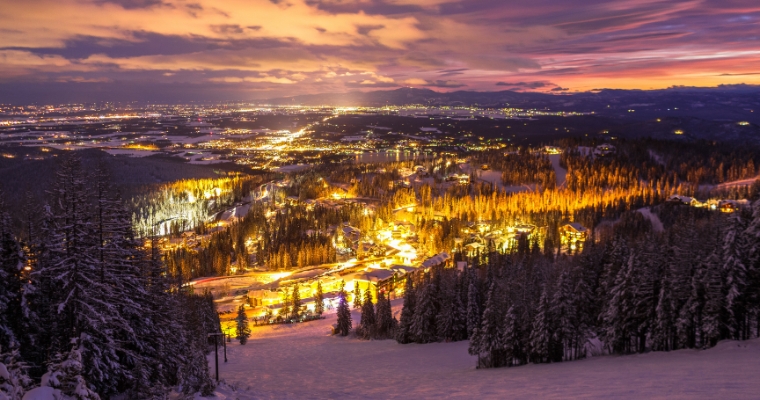
The future of net-zero homes in Whitefish is brimming with exciting possibilities. Technological advancements are constantly pushing boundaries. Studies by the National Renewable Energy Laboratory (NREL) predict significant cost reductions in solar photovoltaics and battery storage in the coming years, making renewable energy even more accessible
Smart home technology will continue to evolve, offering more efficient control over lighting, heating, and appliances. These advancements, coupled with a growing focus on building materials with lower environmental impact, promise even more sustainable net-zero homes.
Government policies and incentives also play a crucial role
The success of Whitefish’s Climate Action Plan demonstrates the positive impact of local initiatives. Future policies that streamline permitting processes for net-zero construction or offer additional tax breaks could further accelerate the movement. A 2023 report by the U.S. Department of Energy highlights the potential for federal tax credits to significantly increase net-zero home adoption nationwide
Public awareness is another key driver
As more residents embrace sustainable living and witness the benefits of net-zero homes, the market is likely to experience continued growth in Whitefish. This could serve as a model for other communities in Montana and beyond, inspiring a broader regional shift towards sustainable living.
Trends & the Road Ahead
- Declining system costs. Technologies like solar panels and batteries are becoming more affordable and reliable—making net‑zero an increasingly practical choice (The GuardianPublic Policy Institute of California)
- Design becoming more intentional. Globally, homes like Huff’n’Puff Haus in Australia showcase minimalistic, biophilic, and passive designs that emphasize function and aesthetics (The Guardian)
- Growing policy support. Clearer standards, tax incentives, and supportive local policies are paving the way for wider adoption of net-zero construction. Whitefish’s own climate-forward stance demonstrates how local leadership can accelerate sustainable growth.
FAQs / Your Questions Answered
Net-Zero Homes in Whitefish are designed to produce as much renewable energy as they consume annually, creating a balanced energy footprint. These homes often rely on solar panels, geothermal systems, or other renewable sources—and may even feed excess energy back into the grid.
Solar panels are the most common method, converting sunlight into electricity. In some cases, wind turbines or geothermal systems are used to enhance energy efficiency and provide consistent year-round performance.
While upfront costs can be higher due to advanced systems and energy-efficient materials, long-term savings on utility bills and eligibility for tax incentives help offset the investment. Learn more about the cost of living in Whitefish to see how net-zero fits into your financial goals.
Yes. Retrofitting is possible by upgrading insulation, windows, HVAC systems, and integrating renewable energy. While more challenging than new builds, the environmental and financial returns are well worth it.
Net-zero homes drastically cut greenhouse gas emissions and support long-term resource conservation. They also promote energy independence and cleaner air—making them healthier for people and the planet.
Using a real-time dashboard from his kitchen, Lee tracked both solar production and energy consumption. This hands-on approach helped him maximize efficiency and stay ahead of his net-zero goals. (Whitefish Pilot article)
Absolutely. Many sustainable homes in Whitefish use composting toilets as an off-grid, water-saving solution. Explore other eco-conscious lifestyle features in our guide to living in Whitefish, Montana.
FEATURED LISTING
EXCLUSIVE WHITEFISH LISTING – 824 E 10TH STREET
Discover the exceptional features and prime location of this stunning home. With unique design and a rare investment opportunity, this is your chance to make it yours. Get full details today.
Conclusion: Building a Sustainable Future, One Net-Zero Home at a Time
Net-zero homes in Whitefish are more than a trend, they’re a tangible step toward energy independence, healthier living, and long‑term value. From Lee Calhoun’s real-world example to local tour highlights, the evidence is clear: sustainable living is both achievable and deeply worthwhile.
Ready to explore net-zero design or build your own eco-luxury home in Whitefish? Connect with Eco Residency to bring your net-zero vision to life. Ready to explore the possibilities of net-zero living in Whitefish? Connect with our team of experts and embark on your sustainable home journey. Together, we can build a brighter future for Whitefish and beyond.

